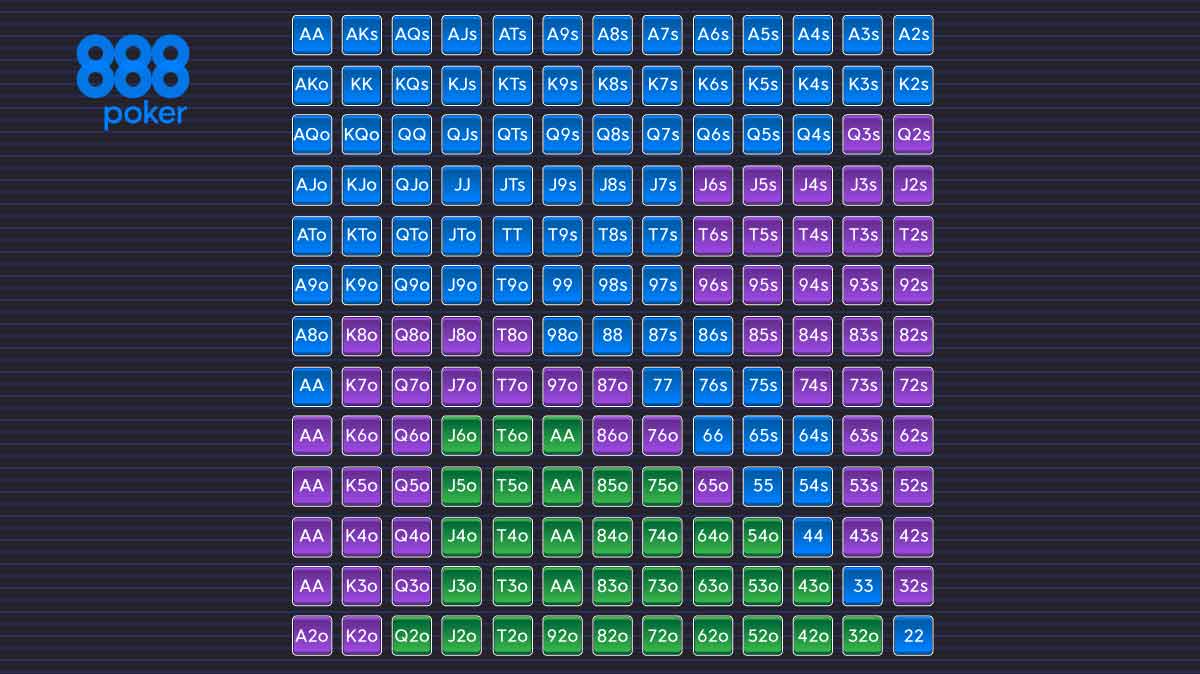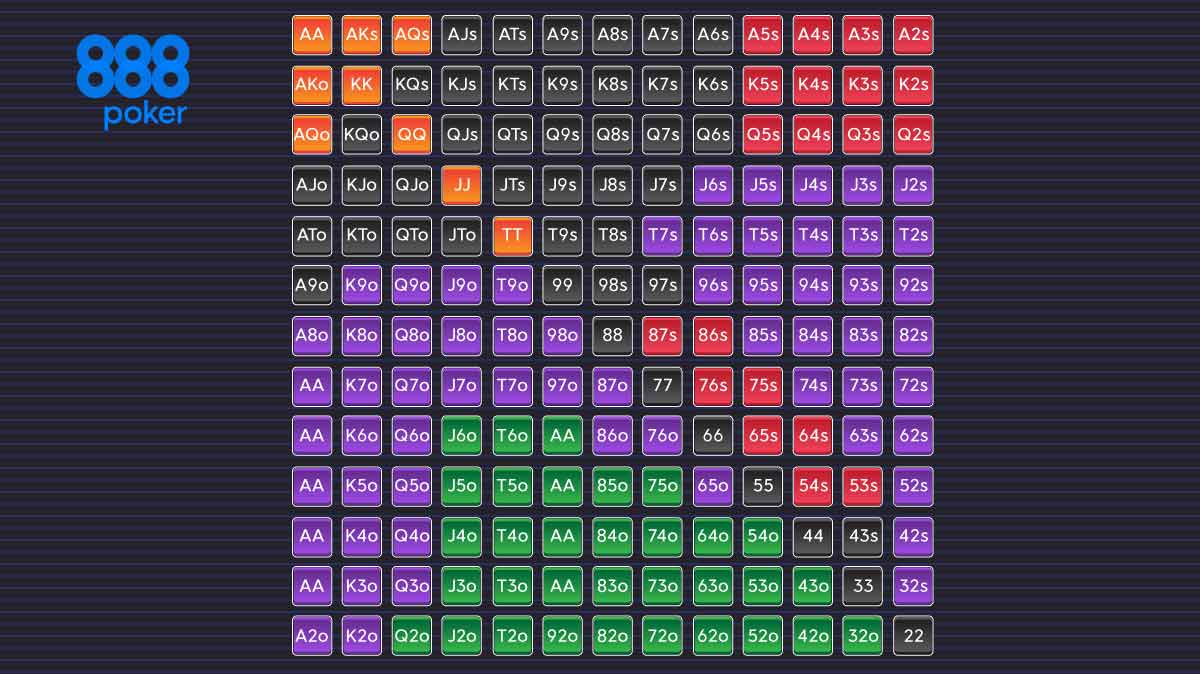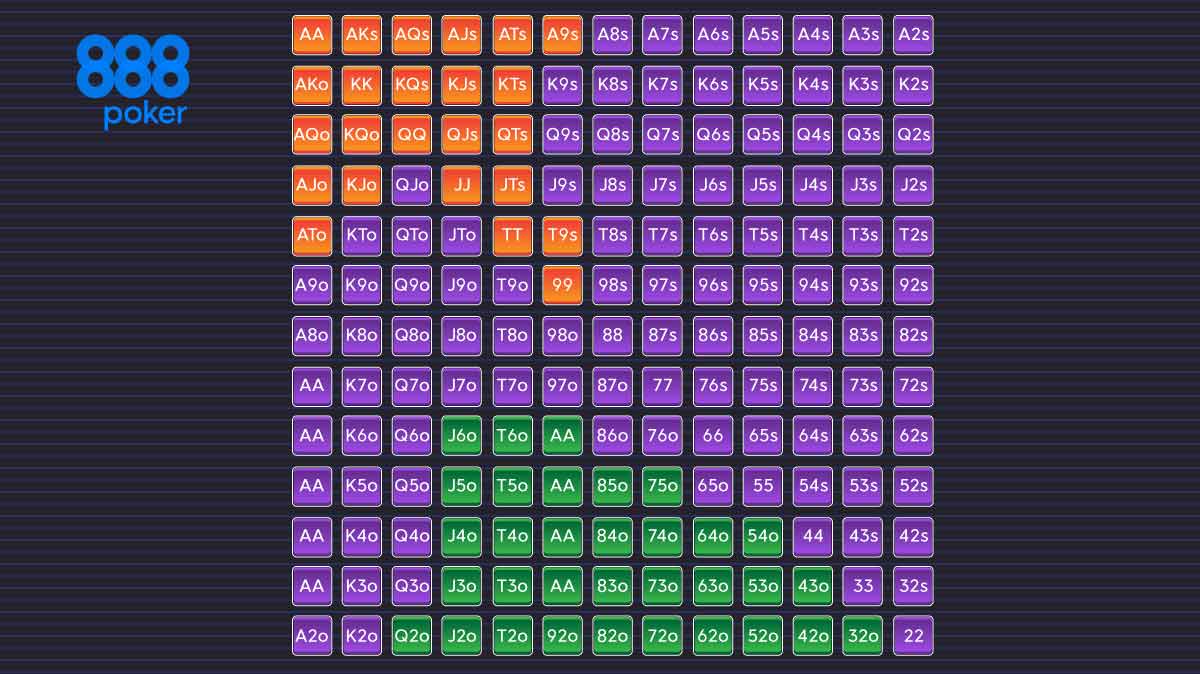Most poker players are familiar with the notion that you should never limp. Preflop limping occurs when a player enters the pot for the price of the big blind – without raising.
Many preflop limpers enter the pot from the SB when the action has been folded around. We call this play a SB complete. But preflop limping also happens from early positions. Players refer to this as an open-limp.
In almost all poker circles, raising preflop is considered stronger than limping. The reason for this is simple.
Raising gives us a way to pick up the pot preflop without seeing a flop.
Is it so straight-forward as saying “limping is always terrible” though?
Most elite players realise that the discussion is more complicated than denouncing every preflop limp as “bad”.
We’ll explore the following areas in the table of contents below–
Limping Behind (Over-Limping)
There is a difference between “open-limping” and “over-limping”. An open-limp implies there is no previous action before us. An over-limp occurs when there are already one or more limpers before us.
Open Limpers are first in, Over Limpers enter with 1+ players in pot
Open-limpers are usually of interest to us. Limping often indicates a weak opponent. It’s profitable for us to play as many hands as possible against weak players.
The standard technique is to raise limpers (known as “isolation raising”). This play seeks to isolate the pot heads-up.
There is a limit to how wide we can go with iso-raising. There will be hands which don’t quite make the cut as iso-raises. But we, nonetheless, love an opportunity to be involved in a pot against a weaker player.
Operating under the paradigm of “we must either raise or fold” is problematic here. We’ll find ourselves making a questionably wide iso-raise. Or we’ll passup the opportunity to play in a profitable spot.
Over-limping allows us to play profitably without over-investing.
SB Complete Heads-Up
Most poker limps occur in the SB. In some senses, SB limps are not true limps at all. They are more correctly referred to as “completes”. We have already invested 0.5bb in the SB. And we simply need to “complete” to the full amount by adding an extra 0.5bb.
Many players apply conventional limping logic to the SB –
- SB completing is terrible.
- We must either raise or fold when it’s folded around to us in the SB.
The majority of winning players understand that SB completing can form an integral part of a solid strategy.
There are at least two reasons for this as we will see in the next two sections.
Reason #1 Playing Hands vs Weaker Players
 Completing vs raising SB when facing weak BB opponents
Completing vs raising SB when facing weak BB opponents
Imagine the following scenario. It’s folded around to us preflop in the SB, and we look down at 86o. Naturally, not a great hand.
Operating under the “raise or fold” model, this hand should be mucked preflop.
But, we look to our left and notice that BB is an exceptionally weak player. He loves to gamble and has been stacking off postflop with garbage all session. We start to feel a little better about open-raising.
Say our preflop open is technically too wide. The postflop implied-odds should make it worthwhile.
Raising could hence easily be better than folding.
Butis there a third option that trumps everything else?
You guessed it, completing in the SB. We still get to initiate a pot against the weaker player. But we keep our initial investment low.
There is little value in open-raising 8-high from the SB if we don’t expect our opponent in the BB ever to fold.
He might make a bad call preflop with Q2o, but that doesn’t benefit us. He is still investing money into the pot as an equity favourite.
Here is a potential limping range vs a weak player in the BB-
- Blue = Open-raise
- Purple = Limp
- Green = Fold
 Potential limping range vs a WEAK player in the BB
Potential limping range vs a WEAK player in the BB
Reason #2 Theoretically Stronger vs Good BB Players
SB completing regardless of BB, is a trend that began at high-stakes and filtered its way down. Certain high-stakes pros decided that SB completing takes better advantage of the blind structure.
We only need to invest 0.5bb on a complete for the chance of seeing a flop in a 2bb pot.
With “raise-or-fold”, it’s difficult to play more than about 36% of hands from the SB against a competent BB opponent. By utilising a completing strategy, we can play roughly 70% of our holdings profitably.
The high-level version of this approach involves cutting out all open-raising. And you should only complete with hands that you wish to continue.
When facing a BB raise, we split our defending range into –
- Limp-calls
- Limp-raises
- Limp-folds
Here is a rough representation of what that range might look like -
- Dark Red = Limp-Raise
- Orange = Limp-Raise (Bluff)
- Black = Limp/Call
- Purple = Limp/Fold
- Green = Fold

Potential limping range vs a STRONG player in the BB
SB Completing (Multi-Way)
SB completing is especially essential when there is a limper before us. We get an opportunity to play against a weaker opponent. Like the concept of over-limping, there will be hands within our range, which are too weak to iso-raise.
But we don’t want to give up on the possibility of being involved in a pot against a weaker player.
We should look to defend around 70% of holdings in the small-blind when facing one or more limpers.
The best hands will be iso-raised. While the majority of holdings can simply be completed, hoping to see a cheap flop.
Possible SB completing range when facing an open-limp -
- Orange = Iso-Raise
- Purple = Limp (SB complete)
- Green = Fold

Possible SB completing range when facing open-limp
Limping From Other Positions
The official advice has to remain that “open-limping is not recommended” except from the SB. But there is no real evidence that open-limping is as bad as it’s made out to be.
Open-limpers don’t usually fare well. They don’t have a good technical understanding of poker. They’ll make many mistakes postflop, which is what results in the low winrate.
What if we were to start by limping preflop, then play strong aggressive poker postflop? Such a style could easily end up winning.
Sure, we don’t get to steal the pot preflop as much. But we still have three postflop streets on which we can make steal attempts.
Saying “limping is bad because we can’t steal the blinds” is akin to saying, “We should never float vs flop cbets because we have no direct fold equity”.
Most players realise that this advice doesn’t make sense. As the goal of a flop float is usually to steal the pot on later streets. We define the expectation of any play by the whole postflop tree that follow, not solely on whether the play can win directly.
A small group of high stakes online players have become aware of this fact. They are experimenting with open-limping strategies from non-SB positions. It’s unclear whether this trend will ever take off.
But it’s interesting to note that this is precisely how SB completes became popular. (The play. filtered down from high-stakes.)
High stakes pros also have the advantage of being misinterpreted as recreational players. Their opponents might attempt to iso-raise overly wide. They leave themselves vulnerable to limp-raises and other exploits from the pros.
Summary: Intelligent Use of Limping in Poker
Here is a quick summary of what we have discussed in this article about limping in poker:
- The key takeaway here is that limping is not always incorrect. In fact, preflop limping seems to have a range of different strategic applications.
- You should look to defend around 70% of holdings in the small-blind when facing one or more limpers.
- Consider completing in the SB when heads-up with weak BB opponent. You still face off against the weaker player but with a low investment.
- The best players will be able to think laterally. They understand when limping makes sense and when it doesn’t.
- To denounce limping as “bad” with a blanket statement is to deny ourselves of a valuable tool in our arsenal.
First published on: 06.26.2018


